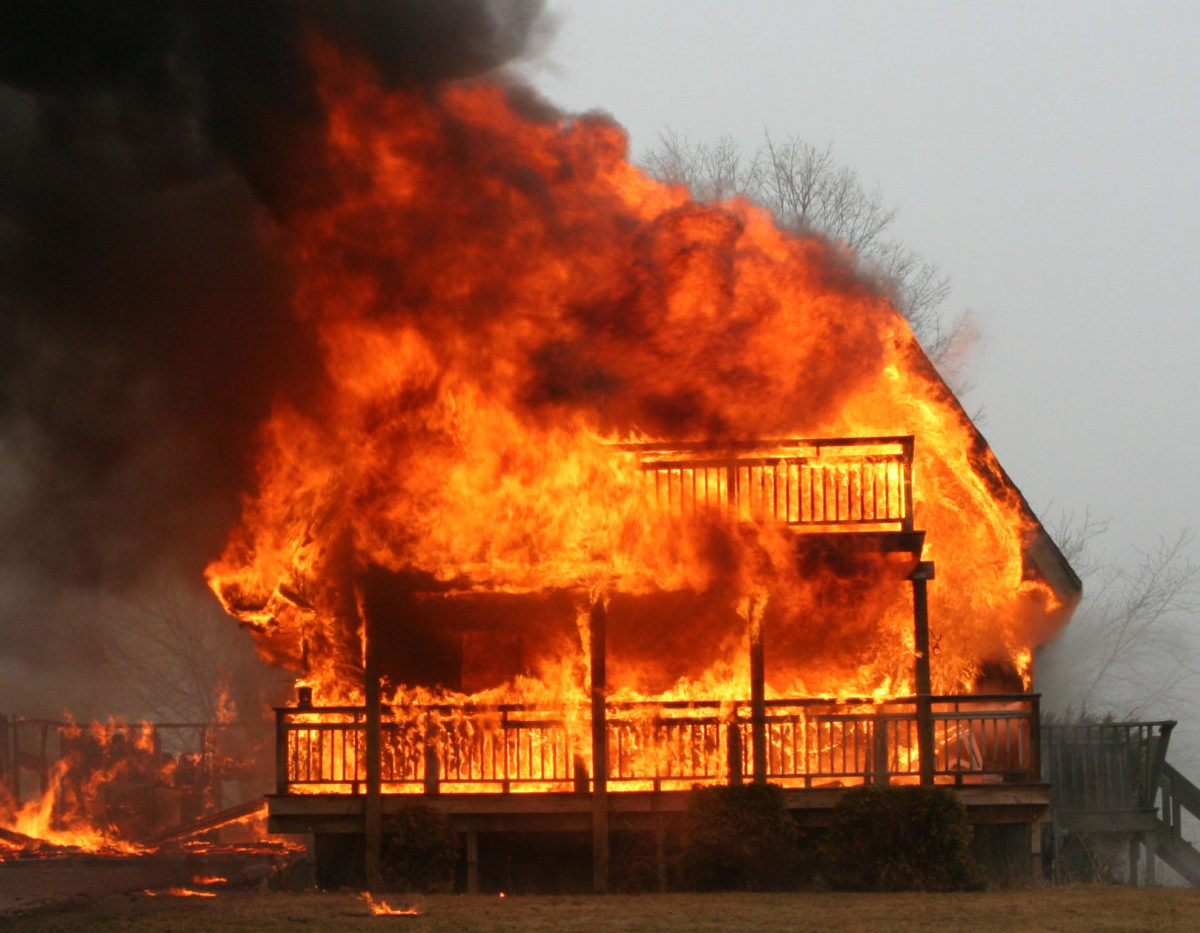
Cameron Todd Willingham was executed in 2004 for setting the house fire that killed his three daughters, but a spate of forensic fire experts have said (both before and after the execution) there is no credible evidence that it was arson. The Texas Forensic Science Commission, which was charged with examining the forensic practices in the Willingham case, released its preliminary report this summer. Their official finding was that the science that underpinned Willingham’s conviction was flawed.
This bombshell sparked lots of speculation about how many others stories there might be about people sitting in prison, or even on death row, because of bad arson science.
Here is one of them:
Daniel Dougherty, Pennsylvania
Like Willingham, Daniel Dougherty had the experience of seeing his home burn down while his children were trapped inside.
The incident happened in 1985. Dougherty said he woke up to find his curtains on fire. He ran outside to get a hose. Neighbors who witnessed the event said they saw Dougherty struggling frantically with the hose and screaming for help. They said he was hysterical. At that moment, Dougherty said in later interviews, he wanted to die.
The fire eventually cooled, and the home was examined. No arrests were made.
Fast-forward fourteen years–Dougherty is embroiled in a custody battle with his second wife (not the mother of the children killed in the fire), when she reports to police that Dougherty confessed to starting the fatal fire with gasoline. Dougherty is charged with arson, despite the fact that no fire reports ever showed that accelerants had been used.
At his trial, fire authorities testify that the fire was not accidental and some jailhouse informants say Dougherty confessed to the crime. He is convicted and given a sentence of death.
We now know that the arson science used in 1985 was based on little more than “old wives’ tales,” in the words of one modern day arson expert. And we know from the Willingham case that even after the scientific guidelines were updated in 1992, they often didn’t trickle down to the local investigators who were analyzing these cases. Like Willingham, Dougherty may have been sentenced to die for a fire that was nothing more than a terrible accident.
Dougherty now awaits execution. He hopes that the Pennsylvania Supreme Court will step in and give him his day in court. His appeal is based on the findings of two world-renowned arson investigators, John Lentini and Angelo Pisani – who also helped debunk the arson testimony on which Willingham was convicted. Lentini and Pisani re-examined the evidence in the Dougherty trial and say, as with Willingham, there is no credible sign of arson.
The forensic analysis given by fire authorities at the time was grounded in outdated techniques and, they say, Pennsylvania is “on their way to executing an innocent man.”
The mother of the children that died in the blaze, Dougherty’s first wife, agrees. She didn’t testify in the original trial because Dougherty’s attorney didn’t ask her to. But she says, “Knowing Daniel and his relationship with his children, I cannot believe he would have burned them to death.”
Arson uncertainty
No one knows how many other cases have been based on faulty arson science. Some say Dougherty is just one of the first of what will be a procession of legal challenges to arson cases from the 1970s, ‘80s and early ‘90s.
How they will transpire remains to be seen. Arson convictions are more difficult to overturn than cases where clear-cut DNA evidence points to a defendant’s innocence. “You’re not going to have the comfort of an authoritative DNA test to tell you you’re right or wrong,” says James Doyle, director of the Center for Modern Forensic Practice at John Jay College of Criminal Justice, who is leading the first comprehensive study of old arson cases.
What is clear is that the criminal justice system has not kept pace with the evolving standards of forensic fire science. In 1992, the National Fire Protection Association released its first arson guidebook based on years of studies and simulations. Before that, standards for determining arson were essentially a collection of hand-me-down lore and mythology. Or, in other words, junk. Can you build justice on a pile of junk? Let’s hope Pennsylvania doesn’t think so.


